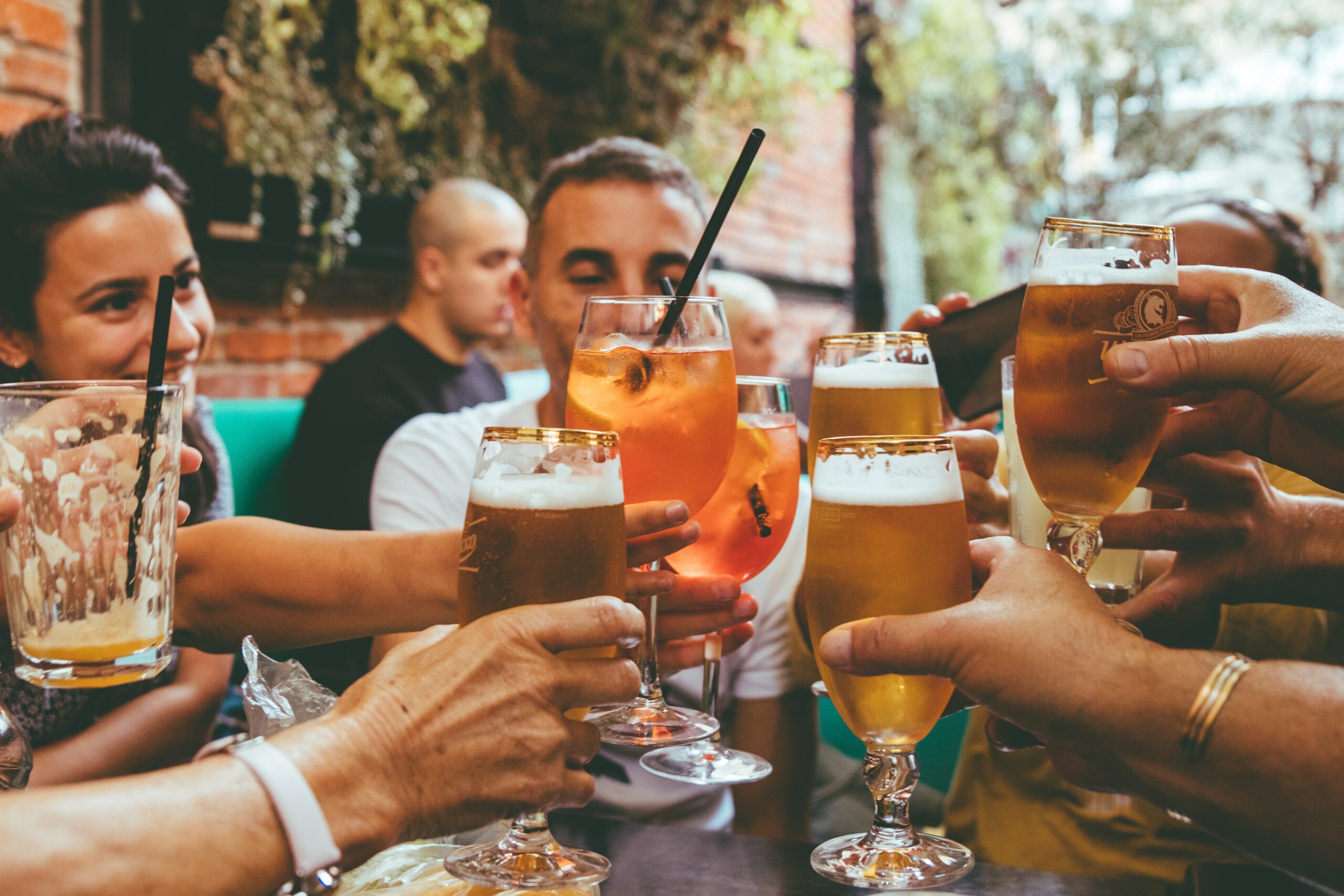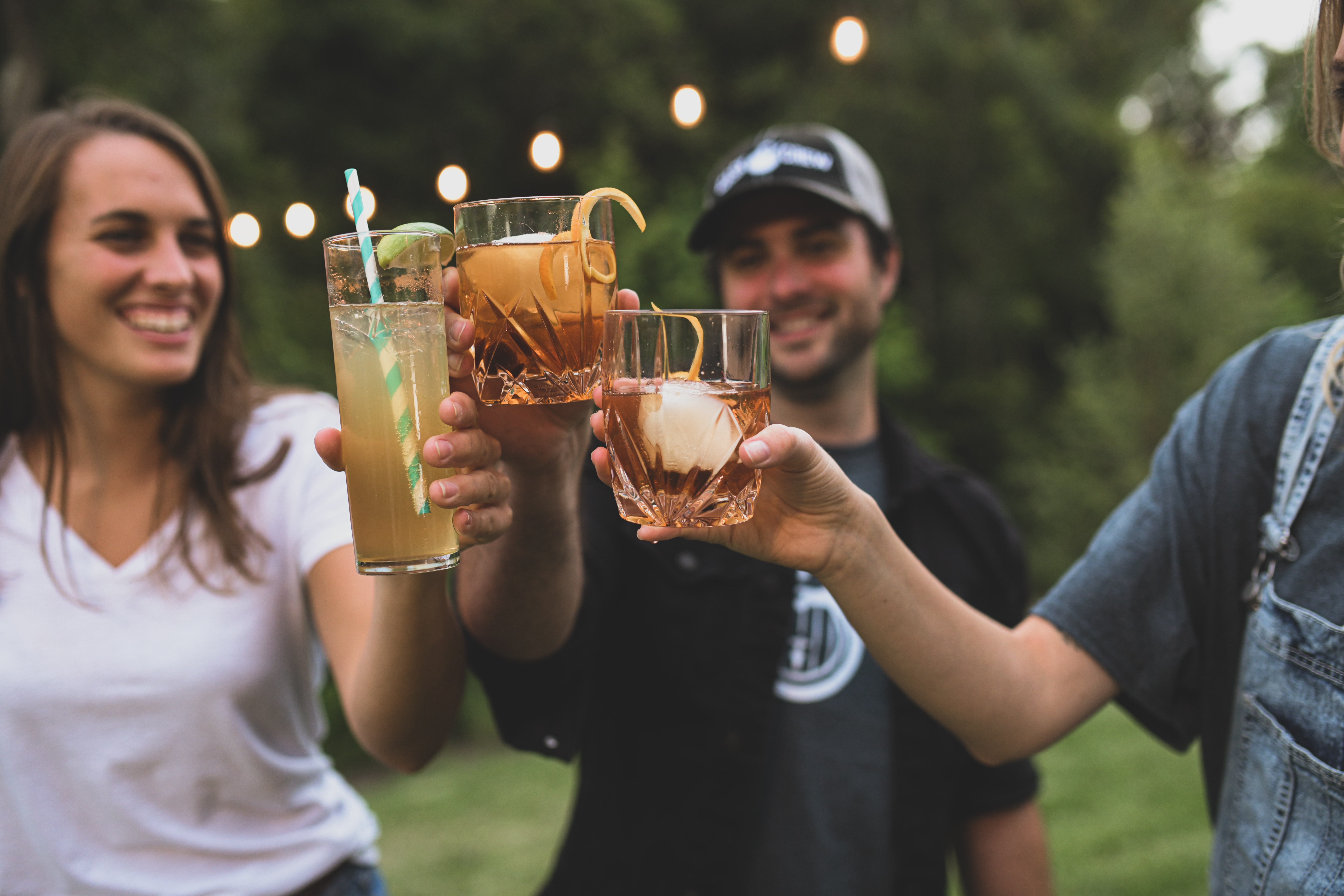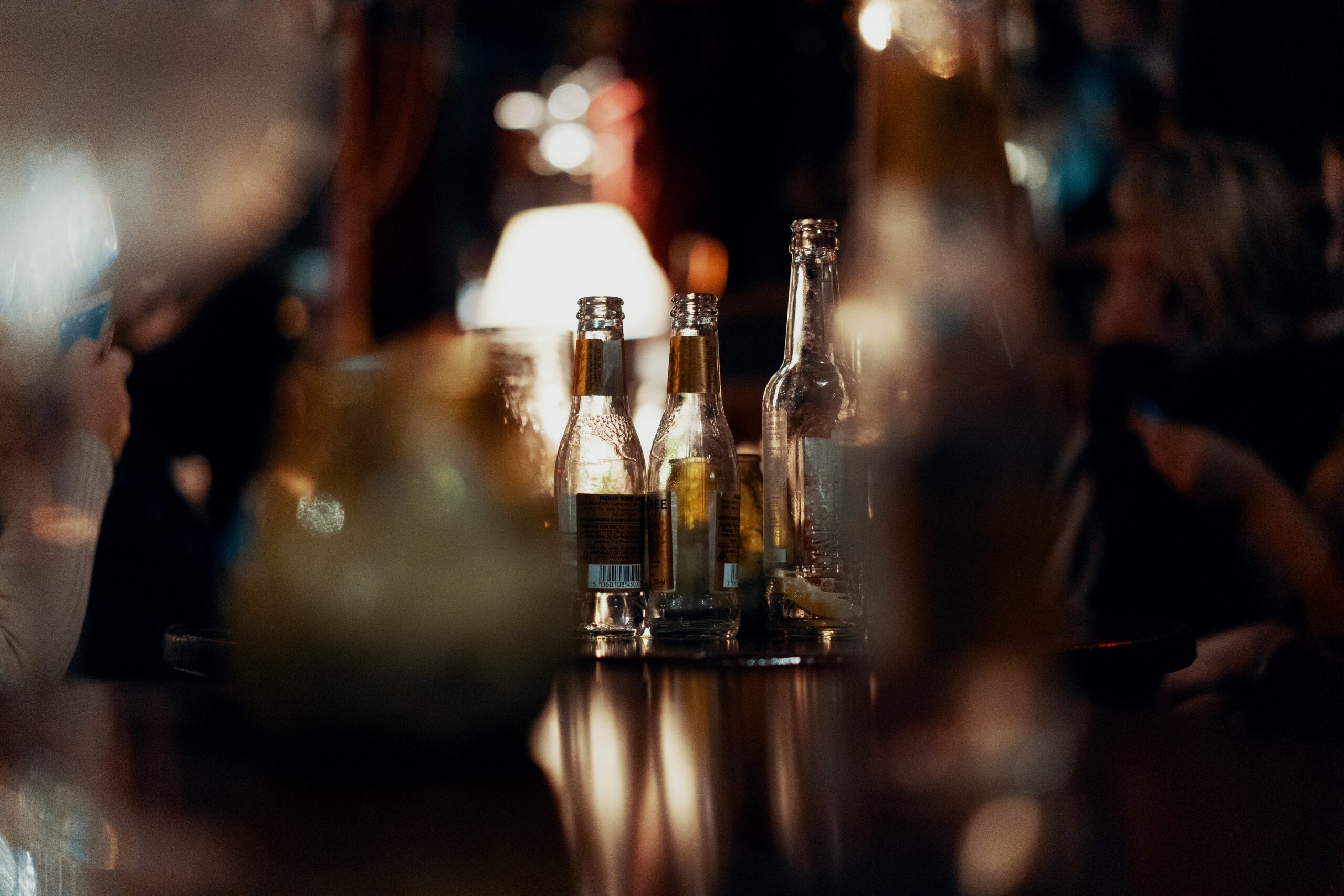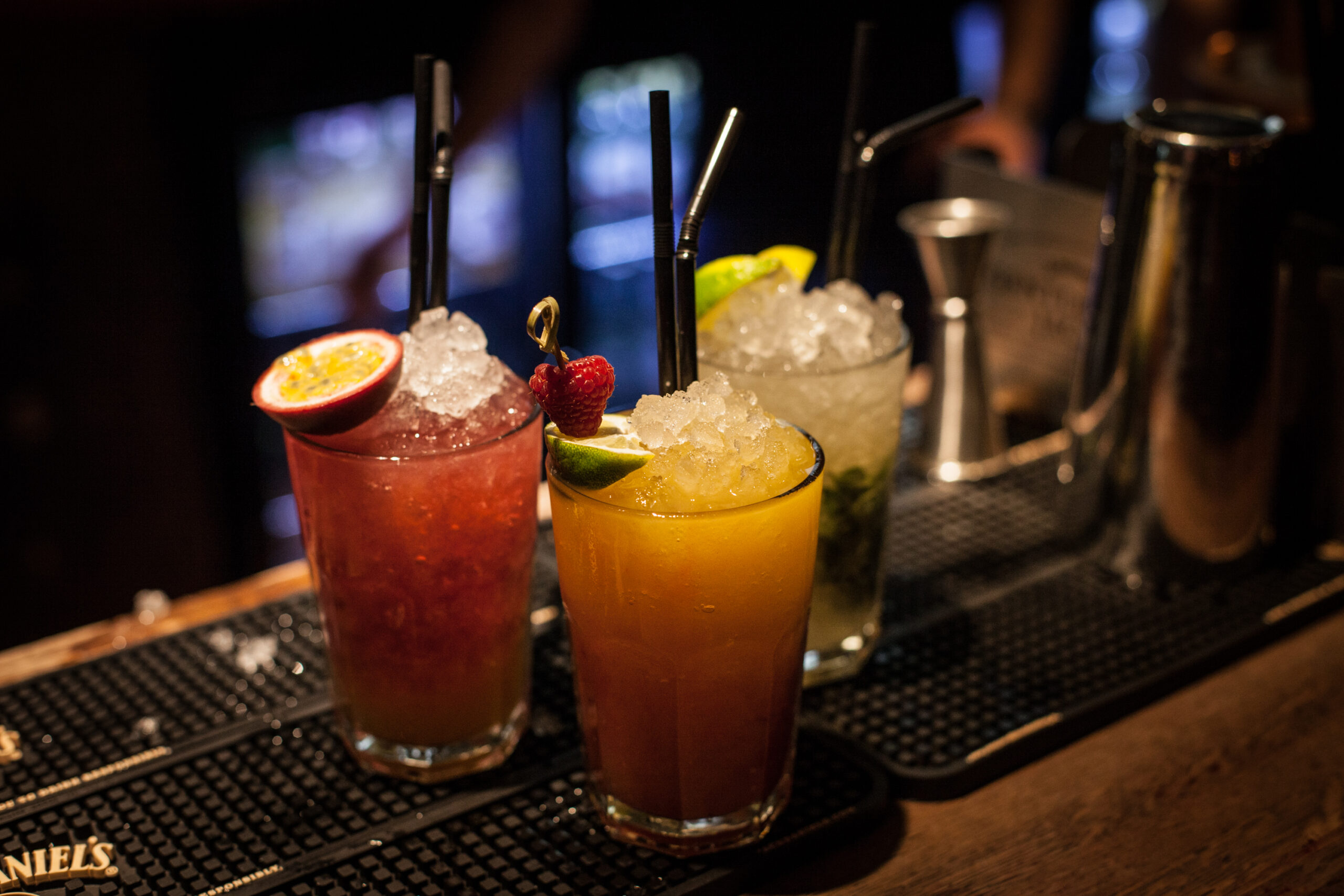
In the wake of ‘Dry January’, the nearly one in five British people who shunned alcohol for the first month of the new year may be weighing up which drink to have first. But for many people – both old and young – the lasting benefits of greater sobriety have become impossible to ignore. This is a radical shift given the prominence of alcohol in many Western cultures, the scale of its commercial promotion and its centrality within people’s social and professional lives.
A growing number of people are either drinking far less alcohol or not touching it at all. In fact, drinking rates among young people have been declining across most high-income countries from the mid-2000s onwards. Today, young people are now less likely to drink alcohol and, if they do so, they begin drinking later, at older ages, drink less frequently, consume smaller amounts, and are less likely to get drunk.

In 2019, a UK-wide survey into drinking behaviours found that 16 to 25 year old British people (so-called Gen Zers, born between 1997 and 2010) were the most likely to not drink at all, with around 26 percent staying sober. A similar study found that Gen Z were drinking 20 percent less per capita than their millennial counterparts. Across the Atlantic, a similar trend is emerging. A 2020 survey of alcohol consumption amongst American university students found that the number of teetotallers – those who don’t drink alcohol at all – had grown from 20 percent to 28 percent in a decade.
Pinning down a single driver for this behavioural shift is impossible. Like any form of social change, there are many overlapping reasons why such shifts occur; from an understanding of the health impacts of drinking alcohol, to concerns over the cost of living and intergenerational insecurity. But what’s clear is that if this trend continues – and it shows no signs of reversing – there will be serious improvements to physical and mental health.
Exploring why behaviours and cultures around alcohol consumption are changing could provide insight for stimulating rapid and just transitions in wealthier industrialised nations, where instilling sustainable behaviour change, and reducing over-consumption at scale is vital for ensuring the habitability of our planet.
From the late 1990s to 2004, drinking became central to the youth cultures of many wealthy industrialised nations like the UK. This period saw the ascendancy of pub and club culture, the normalisation of public displays of drunkenness, and the introduction of headache-inducing alcopops. In 1950, British citizens drank an average of 3.9 litres of pure alcohol equivalent per person. By 2004 – the year of Peak Booze – in diluted form, British people were drinking 9.5 litres of pure alcohol each, the equivalent of more than 100 bottles of wine a year. From this boozy high, alcohol consumption has been steadily falling.

The current decade appears to be completely different for alcohol consumption: young people in most high-income European countries, the USA, Australia, New Zealand, Finland, and the UK are all drinking less than the generations that came before them. And it’s not just alcohol consumption that is declining amongst the youth of today but many behaviours associated with it. The rates of drug use, unprotected sex and ‘risky behaviours’, such as smoking and hazardous driving, are all dropping among younger people (although a vast number of young people have taken to using vapes and e-cigarettes).
While some experts and commentators have argued that this highlights that Gen Z are more “risk averse” or comprise “generation sensible”, it could be due to the more widespread knowledge of the mental and physical health risks of alcohol consumption, or the negative associations many young people have towards alcohol. Research conducted by Google in 2019 found that 41 percent of Gen Zers associated alcohol with “anxiety and “vulnerability”. Another study from 2022 found that, in the UK, 60 percent of Gen Zers associate alcohol consumption with a loss of control.
Changing demographics will also alter attitudes towards alcohol. According to the Institute of Alcohol Studies, demographics play a part in declining alcohol consumption as young people from ethnic minority backgrounds “are less likely to drink, [which] can directly explain a small proportion of the fall in underage drinking”. There is also evidence, outlined in the same report, that minorities can shape the behaviours of their peers. For instance, non-muslim children in schools with a high Muslim population are less likely to drink alcohol.
These social shifts and behavioural changes could have potentially seismic impacts on both public policy and the hospitality industry, not to mention the health of nations and the conviviality of public streets on Friday and Saturday nights. Gen Z makes up around one-third of the global population and, despite its understandable fears over the cost of living, their purchasing power is growing year-on-year. The global alcohol market is currently valued at approximately $1.4 trillion and is expected to grow by an annual rate of 10.3 percent up until 2028. It also employs millions of people worldwide in a range of roles, from brewing to distribution and raises huge amounts of revenue for governments through taxes like VAT, meaning governments are somewhat reluctant to rein in drinking, even when the costs to health systems and of policing alcohol-induced public disorder are so large. Catering to a generation that is going sober, and pivoting production towards low- or no-alcohol drinks, will be essential for the sector’s survival.
While it is extremely difficult to pin down the various drivers behind the trend of younger people drinking far less or not at all, there are a few developments that may have contributed to this generational trend that is visible across most high-income countries. One such development is the meteoric rise of a far greater range of high quality, flavoursome, low- or no-alcohol drinks. According to the brewer Heineken UK, by the early 2020s the no- and low-alcohol sector in Britain is achieving an annual growth rate of 36 percent. This growth does not appear to be subsiding and various brands are looking to cash in on this emerging market, with large beer producers spending roughly 30 percent of their marketing budgets on pushing no- and low-alcohol products. This suggests that cumulative individual behaviour changes can shift consumer markets rapidly.

Many young peoples’ lives were turned upside during the global pandemic. University life, infamous for its alcohol-fuelled shenanigans, became a wholly online experience where students found themselves siloed, cut off from the student body and unable to put down roots in their host cities and towns. It is no wonder that loneliness, stress, and depression spiked amongst the student population during the pandemic, with various studies conducted around the world arriving at similar conclusions. Younger people’s experience of the pandemic, and its lasting impacts, may have altered their relationship with alcohol and the centrality of it to the student experience. Likewise, the experience of the pandemic also gave rise to many sustainable behaviour changes, particularly in the areas of overconsumption and unnecessary travel, that have endured. Habit discontinuity can be a powerful tool for shifting behaviours and social norms.
There are also the many structural challenges facing young people today, of which the climate crisis is just one. A survey of nearly 15,000 Gen Zers around the world found that the cost of living was their most pressing concern (29 percent), ranking higher than climate change and mental health. The same survey found that nearly half (46 percent) were living paycheck to paycheck, with 43 percent taking on an additional job to try and boost their financial security. These trends differ along the lines of income and class. Half of Gen Zers and millennials are spending their entire monthly income on living costs. These daunting challenges are sobering.
The interplay of factors behind the falling rates of alcohol consumption among young people are numerous and complex. Yet there are clear examples of enabling conditions that have acted as a springboard for declining alcohol consumption – and that may inform shifts in behaviour towards more sustainable ways of living.
Enabling behaviour changes requires shifts in the provision of goods and services. This can range from the provision of infrastructure, such as protected cycle lanes, to making plant-based foods the default option. The burgeoning crowd of sober-curious Gen Zers have been emboldened by the sheer number of no- or low-alcohol drinks on the market: a clear shift in the provision of goods. The market value of no- or low-alcohol reached just under $10 billion in 2021, a marked increase from the $7.8 billion in 2018. The market is expected to grow further, with sales growth of 31 percent by 2024.

But it’s not just about quantity: quality matters too. Improving recipes and brewing processes within the wine and beer sectors have produced products that taste good. And, in addition to this, there are a range of new products coming to market that take advantage of younger people’s desire to stay sober that are making use of nootropics to provide a different kind of buzz. Pubs and clubs are cottoning on to this growing market and are stocking up on low- or no-alcohol drinks, with four in five bars planning to increase the range of alcohol-free drinks in 2023. These spaces are also becoming less centred on drinking and have introduced games or other collective activities like shuffleboard and ping pong to help pull in sober punters. Under the auspices of Gen Z, pubs might be turning into places of play rather than just drinking venues.
Peer pressure is a considerable determinant of behaviour, especially alcohol consumption. However, Gen Z seems to be bucking this trend through the use of social media, through which they are able to seek out or create supportive and safe spaces to help them navigate such behavioural shifts. From Reddit to TikTok’s #SoberTok communities, there are hundreds of thousands of young people using social media to share, support, and celebrate each other on the journey.
In fact, the very existence of social media and its prevalence within young people’s lives may also be a factor in the rise of sobriety. Research from Google found that 49 percent of Gen Zers believe their online image is constantly at the back of their mind when they are out socialising and drinking. The same survey found that 76 percent of Gen Zers feel it is important to be in control of all aspects of their life at all times, which could suggest why so many are choosing not to drink alcohol. However, some research suggests the opposite: that heavier social media usage among 10 to 15 year olds in the UK is linked with more frequent alcohol consumption.
Social media has also been leveraged to further sustainable behaviour changes. The #FlightFree movement, for instance, has successfully created an online community of people, both young and old, that are forgoing flying on climate grounds and sharing their stories. The aim is to connect and empower individuals shifting their behaviours in order to support wider systemic change. Similar online communities have sprung up to help people go vegan or gain the skills required to repair and mend clothes.

Consumption behaviours can change in response to shifting social norms. And what seems normal to one generation can seem completely alien to the generation that follows it. This divergence is visible in surveyed sentiments around gender, monogamy, the job market and world of work, as well as the importance of tackling climate change. Perhaps we are seeing the beginnings of a similar shift taking place with regards to alcohol.
The generational divides are clear to see: in the UK young adults aged between 16 and 24 now account for the second highest age group of alcohol abstainers, over-taking adults aged between 65 and 74. The growth in alcohol abstainers among young people is also coming from groups less associated with going alcohol-free, such as students, those with good mental health, and those in full employment. The Institute of Alcohol Studies suggests that “older generations could learn from their younger counterparts in explicitly adopting alcohol-free days or weeks.”
The shifting sentiments between generations may carry through to other behaviours that currently enjoy cultural dominance, such as eating meat and frequent air travel. But understanding how these shifts can be accelerated and maintained is the key to unlocking their potential to stimulate rapid and just transitions.